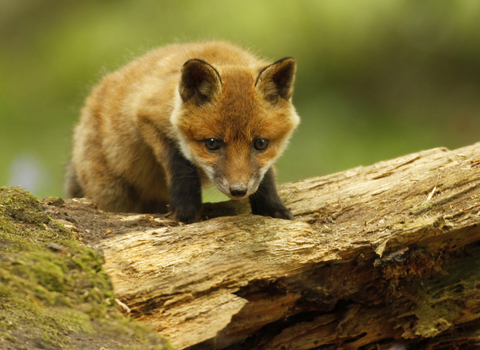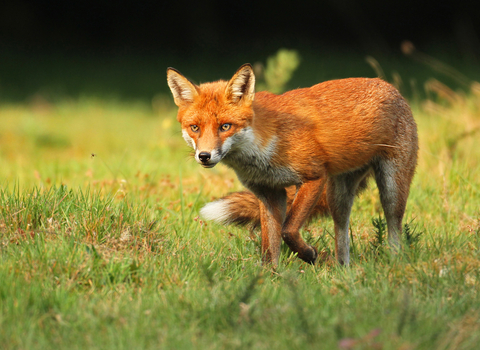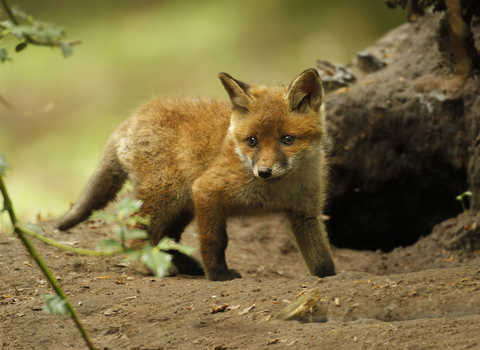
©Jon Hawkins

©Jon Hawkins
Red fox
Scientific name
Vulpes vulpesWhen to see
January to DecemberSpecies information
Category
Statistics
Length: 62-72cmTail: 40cm
Weight: 5-7kg
Average lifespan: 2-3 years
About
The red fox is our only wild member of the dog family. They are not fussy eaters and will happily munch on small mammals, birds, frogs, worms as well as berries and fruit! Foxes that live in towns and cities may even scavenge in bins to look for scraps. A male fox, called a dog makes a barking noise whereas the females, called vixens make a spine-chilling scream sound.How to identify
A medium-sized dog, the red fox is orangey-red above, white below, with black tips to the ears, dark brown feet and a white tip to the bushy, orange tail (known as the 'brush').Distribution
Widespread, but absent from the Channel Islands, the Isles of Scilly, Scottish islands and the Isle of Man.In our area
Foxes are a common sight across Shropshire and can often be found roaming our reserves, farmland and within built up areas including Shrewsbury and Telford.
During the summer months, they are more active in daylight and cubs are often seen emerging from woodland and hedgerows. The best nature reserves to spot foxes are Llynclys Common, The Ercall and Earl's Hill, particularly on the borders with surrounding farmland.
Did you know?
Red foxes live in a burrow system called an 'earth'. They scent-mark their territorial borders with urine, creating a very strong, recognisable odour. They also have scent glands on their feet to mark well-used trails so they can follow them easily at night.Watch
Red fox (https://vimeo.com/642314996)
John Bridges
Foxes are a common sight across Shropshire and can often be found roaming our reserves, farmland and within built up areas including Shrewsbury and Telford.
During the summer months, they are more active in daylight and cubs are often seen emerging from woodland and hedgerows. The best nature reserves to spot foxes are Llynclys Common, The Ercall and Earl's Hill, particularly on the borders with surrounding farmland.

